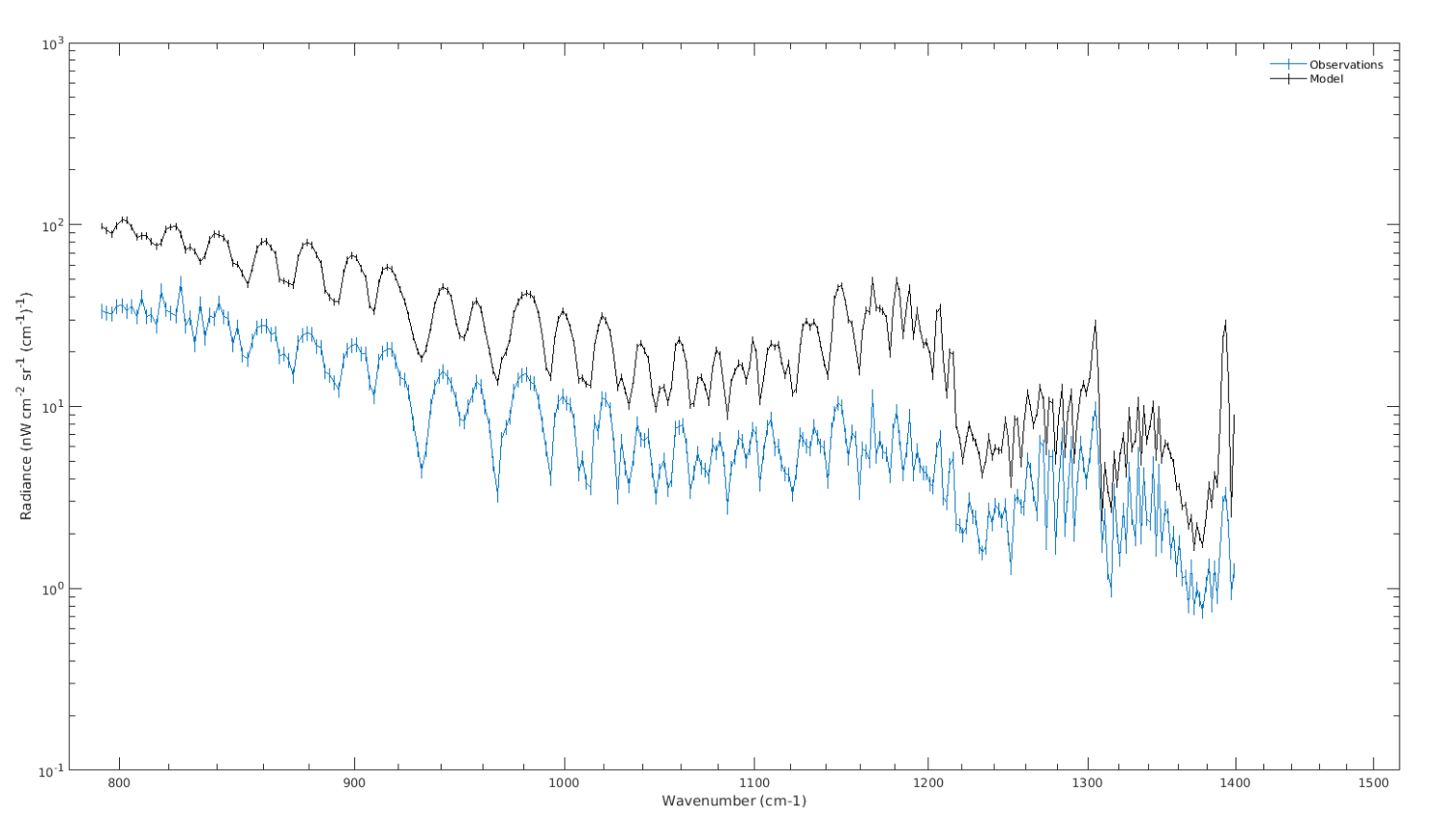Preliminary atmospheric study of Jupiter using ISO/SWS data
- 1Faculdade de Ciências da Universidade de Lisboa, Instituto de Astrofísica e Ciências do Espaço, Portugal (jribeiro@oal.ul.pt)
- 2Faculdade de Ciências da Universidade de Lisboa, Instituto de Astrofísica e Ciências do Espaço, Portugal (machado@oal.ul.pt)
- 3Universidad del País Vasco, Bilbao, Spain (santiago.perez@ehu.eus)
- 4Faculdade de Ciências da Universidade de Lisboa, Instituto de Astrofísica e Ciências do Espaço, Portugal (jadias@oal.ul.pt)
- 5University of Oxford, Oxford, United Kingdom (patrick.irwin@physics.ox.ac.uk)
The study of the thermal spectrum of Jupiter gives us the possibility to study the elements that constitute the Jovian atmosphere, allowing us to infer the formation history and conditions of the giant planet (Taylor et al., 2004). Determining the abundance of chemical species and isotopic ratios is fundamental in this regard. For this, we reanalyse 1997 Jupiter data obtained by the ESA mission Infrared Space Observatory (ISO) (Kessler et al., 1996) in the 793.65-3125 cm-1 (3.2-12.6 µm) region using the Short-Wave Spectrometer (SWS) (de Graauw et al., 1996). Despite the age of this data, we argue that it warrants a revisit and reanalysis since it was an important step in the study of Jupiter’s atmosphere and there have since been advancements in atmospheric models and line data.
In this work we used the NEMESIS radiative transfer suite (Irwin et al. 2008) to reproduce the observations from Encrenaz et al. (1999), which will also work as a validation of our method. Using the Cassini/CIRS model as a starting point, we adapted the template for the ISO/SWS data. We compiled correlated k-tables from the spectral line database from Fletcher et al. (2018) for a NH3, PH3, 12CH3D, 12CH4, 13CH4, C2H2, C2H6, C2H4, C4H2, He and H2 atmosphere.

Figure 1: Plot of ISO/SWS and CIRS observations showing the discrepancy between both (no offset applied)
We first compare the spectrum obtained by ISO/SWS with the a priori model in order to find discrepancies between them as well as how each molecule individually impacts the forward model (Figure 1).
Our current work is focused on the 793.65-1500 cm-1 (6.7-12.6 µm) region of the spectrum, for comparison reasons between the CIRS and ISO-SWS data, with the 793.65-1200 cm-1 (8.3-12.6 µm) region showing the best fit.
We present here our preliminary results of the study of abundances of 12CH3D, 12CH4, 13CH4, C2H2 and C2H6 of Jupiter’s atmosphere as well as our study of the pressure-temperature profile of Jupiter obtained using NEMESIS retrievals. We also compare our results with the profiles and abundances from Neimann et al. (1998) and Fletcher et al. (2016) with the aim of constraining the number of possible best fit profiles.
As consequence of the former study, we also present our initial study of the H/D and 12C/13C isotopic ratio of the Jovian atmosphere from the abundances of 12CH3D, 13CH4 and 12CH4 following the methodology from Fouchet et al. (2000).
We hope with this work to advance the understanding of the atmosphere of Jupiter and the physical and chemical processes that occur, as well as better determining its vertical distribution of chemical species and thermal profile. As future work, we expect to extend our frequency domain to the full range of ISO/SWS observations, study the 15N/14N ratio and compare our finding with other relevant results.
References:
- de Graauw et al., Observing with the ISO short-wavelength spectrometer, A&A 315, L49-L54, 1996
- Encrenaz et al., The atmospheric composition and structure of Jupiter and Saturn form ISO observations: a preliminary review, Planetary and Space Science 47, 1225-1242, 1999
- Fletcher et al., Mid-infrared mapping of Jupiter’s temperatures, aerosol opacity and chemical distributions with IRTF/TEXES, Icarus 278, 128–161, 2016
- Fletcher et al., A hexagon in Saturn's northern stratosphere surrounding the emerging summertime polar vortex, Nature Communications, Volume 9, 2018.
- Fouchet et al., ISO-SWS Observations of Jupiter: Measurement of the Ammonia Tropospheric Profile and of the 15N/14N Isotopic Ratio, Icarus 143, 223–243, 2000
- Irwin et al., The NEMESIS planetary atmosphere radiative transfer and retrieval tool, Journal of Quantitative Spectroscopy & Radiative Transfer 109, 1136–1150, 2008
- Kessler et al., The Infrared Space Observatory (ISO) mission, A&A 315, L27, 1996
- Neimann et al., The composition of the Jovian atmosphere as determined by the Galileo probe mass spectrometer, Journal of Geophysical Research Atmospheres 103(E10):22831-45, 1998
- Taylor et al., Jupiter, The Planet, Satellites and Magnetosphere, Ch.4, Cambridge Planetary Science, Eds. Bagenal, Dowling, McKinnon, 2004
Acknowledgements:
We thank Thérèse Encrenaz, from LESIA, Observatoire de Paris, for providing the data for this work, Patrick Irwin, from the University of Oxford (UK), for the help with the NEMESIS radiative transfer suite and Maarten Roos-Serote for guidance and help in analysing the data and retrieval results.
We acknowledge support from the Portuguese Fundação Para a Ciência e a Tecnologia (ref. PTDC/FIS-AST/29942/2017) through national funds and by FEDER through COMPETE 2020 (ref. POCI-01-0145 FEDER-007672) and through a grant of reference 2021.04584.BD.
How to cite: Ribeiro, J., Machado, P., Pérez-Hoyos, S., Dias, J., and Irwin, P.: Preliminary atmospheric study of Jupiter using ISO/SWS data, Europlanet Science Congress 2022, Granada, Spain, 18–23 Sep 2022, EPSC2022-257, https://doi.org/10.5194/epsc2022-257, 2022.

